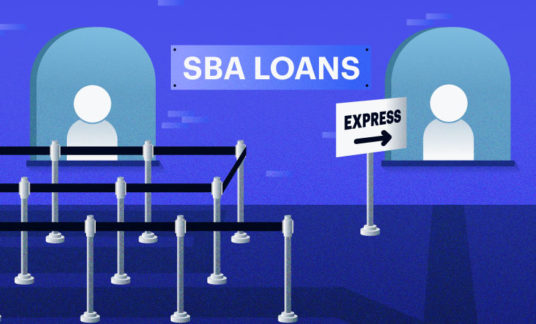The Schedule K-1 tax form is issued annually by the Internal Revenue Service (IRS) to partners and shareholders of certain businesses. It reports each partner’s share of earnings, losses, deductions and credits used to file business and personal tax returns.
The form affects owners of pass-through business entities, including partnerships, S corporations and LLCs. Let’s go through what is a Schedule K-1 and how to file a Schedule K-1 tax form so you’ll feel confident tackling your tax forms this year.
What Is a Schedule K-1 Tax Form?
Any owner or shareholder of a business entity that is considered a “pass-through” entity for tax purposes must receive and file a Schedule K-1 form. These companies have the tax burden placed on the owners and not the company itself.
Schedule K-1 form distribution for pass-through entities:
- Partnerships (general and limited liability)
- S corps
- LLCs that choose to be taxed as partnerships
Partnerships
In general and limited liability partnerships, business owners pay taxes on the business’s income. Each will pay taxes based on their share of the burden. For example:
- Your business has 4 partners. Each owner would receive their own Schedule K-1 tax form to complete.
If your business made $500,000 in revenue last year, each partner would owe 25% of the tax burden, or $125,000.
Use the IRS 1065 Form and other financial data to complete and submit the Schedule K-1 and your personal tax return. It lists the income, losses, deductions and credits associated with your business.
- Small business tip: If your partnership agreement contains guaranteed payments (salaries) for one or more members, they must be included on the Schedule K-1 tax form.
Schedule K-1 Tax Form for S Corps
Unlike C corps, S corps are considered “pass-through” entities, so shareholders must file a Schedule K-1 form every year.
The process for shareholders works the same as it does with partnerships. Anyone who owns an interest in the company (whether it’s 2% or 98%) is required to submit the form.
When filling out a Schedule K-1 tax form, S corp shareholders report all income, losses, deductions and credits they received from the business in the prior year. This information will be supplied on IRS Form 1120S.
Calculations will be made based on the shareholder’s individual share of income.
For example, a shareholder with a 10% stake would be responsible for paying taxes on $50,000 if their business’s income was $500,000.
After filling out the form, submit it and include the information on your personal tax return.
Limited Liability Companies (LLCs)
An LLC’s filing process for a Schedule K-1 will depend on how the company is structured. If you’ve set it up to be taxed like a partnership, you’ll follow the rules for a partnership. If it’s structured as a corporation, simply follow the Schedule K-1 tax form instructions for S corps. You’ll get the designated IRS form (1065 or 1120s), fill your Schedule K-1 out and send it in. Calculations will be based on your ownership agreements as well as shareholder stakes.

Schedule K-1 Tax Form Deadline
Your business tax returns must be submitted to the IRS by March 15.
The Schedule K-1 tax form deadline is the same day. Having the deadline a month before personal taxes are due gives owners and shareholders time before the personal tax return deadline.
Schedule K-1 Instructions
IRS tax documents can be confusing, but Schedule K-1 forms are fairly straightforward.
How to file a Schedule K-1 tax form, from the forms you need and the information you’ll provide, will depend on your business structure.
Owners of partnerships will receive IRS Form 1065 in the mail. On it, you’ll find all information relating to the income, losses, deductions and credits from your business from the previous year.
S corp shareholders will receive Form 1120S. It holds the same information, giving you all the financial numbers you need to plug into the Schedule K-1 form.
LLC members will receive the form correlating to the type of tax structure they’ve chosen.
-
- When filling out the Schedule K-1 tax form, you’ll complete 3 sections with information from the designated IRS form and your business’s financial documents.
The 3 sections are:- Info about the business
- Info about owner or shareholder
- Share of income, losses, deductions and credits
- When filling out the Schedule K-1 tax form, you’ll complete 3 sections with information from the designated IRS form and your business’s financial documents.
Part I: Business Info
The first section of the Schedule K-1 form asks you to fill in the following information about your business:
- Employer Identification Number (EIN)
- Business name
- Address
- The IRS center where your return is filed
- Whether or not it’s a publicly-traded partnership
Part II: Owner/ Shareholder Info
The second section uncovers each owner or shareholder’s role and claim to the business’s finances.
You’ll include:
- Owner’s social security number and address
- Role within the business
- General partner
- Limited partner
- Shareholder
- Share of business income and liabilities
- E.g., 50-50 partner would write down 50%
- Capital account analysis
- Only if your business uses the accrual accounting method
Part III: Financial Stakes
The final section asks you to input all of the income and losses that you received directly from the business. This information is calculated by taking the total amount of each category and applying the percentage of your financial stake to it. If the business operated at a loss in any given category, you’d reflect that here.
For example, if your business generated $100,000 in revenue and you own 25% of the company, you’d write $25,000 in the “ordinary business income” box.
Some of the other information to provide includes:
- Real estate rental income
- Interest income
- Guaranteed payments
- Dividends
- Royalties
- Capital gains
- Distributions
- Small business tip: The categories are separated because a K-1 tax rate varies depending on the source of income. Be sure to check for accuracy, ensuring you don’t pay too much or too little for a specific part of your income.
Not all of these categories will apply to your business. If you didn’t receive income from any of the sources, simply leave the box blank.
Tips for Completing Schedule K-1
Keep the following things in mind to save yourself from being financially penalized or contacted by the IRS about your Schedule K-1 form.
- Complete your Schedule K-1 before your personal taxes. This way, you won’t have to amend your personal tax return after you submit it.
- Fill it out even if your business operated at a loss. Showing a loss might lower your tax bill, saving you thousands that you can put back into making your business profitable.
Submitting a Schedule K-1 Tax Form
Play it safe when working with the IRS — filling out your Schedule K-1 tax form incorrectly or illegibly could mean making amendments to it, which can cost time and money taking it to a tax professional to get it right.
If the form goes through, inconsistencies between your Schedule K-1 and either 1065 or 1120S forms could lead to an audit.
When you complete the forms, send them to the IRS center, where you normally file your business taxes.
Partnerships will need to submit their Schedule K-1 along with Form 1065. S corps will mail it with form 1120S.
Make sure to keep all of the information on file from your Schedule K-1. It will help you fill out that year’s personal tax return accurately. It will also be a good reference when you do taxes in the future and might be something lenders want to see when applying for a small business loan.











